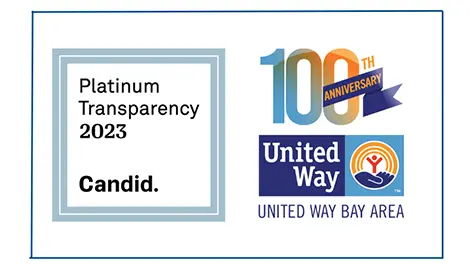Search
Meeting the Moment: 5 Key Insights into What Bay Area Communities Need Most Right Now
November 12, 2025

Every year, United Way Bay Area (UWBA) assesses our region to identify changes and understand community needs. We use this information to improve our service to communities and share it with our partner organizations for the same purpose. In March 2025, we launched our second Community Pulse Initiative, combining public data, UWBA program insights, and perspectives from more than 130 local agencies, staff, and Ambassadors.
The results are clear: the Bay Area’s cost of living continues to increase faster than safety net services can expand. But our community also shared where opportunities exist and how UWBA can help address the challenge.
Here’s what we learned.
- Meeting Basic Needs Is Harder Than Ever
- Fear and Barriers Are Growing – Especially Around Benefits
- Nonprofits Are Facing a Funding Cliff
- Collaboration Is the Key to Resilience
- The Path Forward: United IS the Way
- About Us
-
Meeting Basic Needs Is Harder Than Ever
Groceries, rent, and utilities are increasing faster than wages, making it harder for more households to keep up. This pressure affects especially immigrant and mixed-status families, older adults, BIPOC residents, and households with children—groups already facing obstacles to public benefits and affordable housing.
When families dedicate most of their income to housing costs, they have little left for food, transportation, or savings—forcing many closer to a crisis.
Cost of living is the #1 pressure facing Bay Area families.
-
Fear and Barriers Are Growing – Especially Around Benefits
Community members report increased fears of deportation as a barrier to applying for public benefits or seeking affordable housing – especially those with undocumented or mixed-status households. This hesitation often causes people to go without critical supports they qualify for, such as food assistance and rental aid.
Systems meant to serve everyone must be trusted by everyone. When families fear seeking help, our safety net fails in its purpose.
-
Nonprofits Are Facing a Funding Cliff
A striking 71% of agencies said their main concern is funding cuts for community programs. With more of the region’s nonprofits, San Francisco, Napa, and Solano Counties would be especially impacted, reporting that without federal funding, many would face financial distress within the year.
Staff retention is becoming one of the biggest challenges for agencies doing the hardest work. Fewer resources mean fewer meals, rental payments, and increased pressure on frontline staff already stretched thin.
Without stable funding, the very organizations keeping families afloat risk being pulled under themselves.
-
Collaboration Is the Key to Resilience
When asked how UWBA could best support them, agencies were unanimous: collaboration and advocacy matter most.
This year, UWBA will focus on five pillars of action:
- Collaborate: Strengthen cross-sector partnerships that align government, private, and community organizations.
- Convene: Bring partners together to identify challenges and build shared solutions.
- Share Resources: Expand trainings and tools that help local agencies meet the growing need.
- Advocate: Protect safety-net programs and tax credits that keep families stable.
- Learn & Educate: Pilot and share promising responses to the rising cost of living.
Together, we can make systems work smarter and fairer—so no one has to navigate hardship alone.
-
The Path Forward: United IS the Way
The 2025 Community Pulse isn’t just data – it’s direction.
It confirms what UWBA has long known: when we work together across sectors, listen to those closest to the challenges, and act boldly, we can move from crisis response to lasting stability.
Every partner, donor, and neighbor has a role to play in shaping the Bay Area’s recovery story.
We’re deeply grateful to all who shared their insights and time. Your voices shape how we show up for the community, today and every day.
Together, we can safeguard opportunity, strengthen our safety net, and build a Bay Area where everyone can thrive.
United is the Way.
About Us
United Way Bay Area a leading anti-poverty organization, drawing on decades of community partnerships, data-driven insights, and frontline program experience to understand and address the Bay Area’s most pressing needs. Through initiatives like the Community Pulse, UWBA brings together public agencies, nonprofits, and local leaders to identify emerging challenges, strengthen the safety net, and advance equitable solutions that help families build lasting financial stability.


